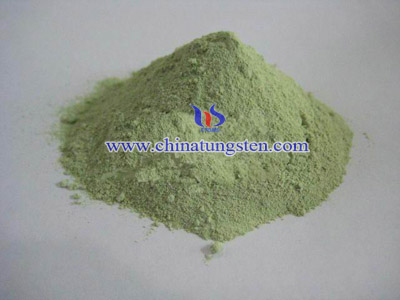Tungsten Oxide Used to Increase the Heat-input Amount of Near Infrared Radiation
- Details
- Category: Tungsten Patents
- Published on Friday, 29 January 2016 15:55
The invention relates to the use of tungsten oxide or tungstate to increase the heat-input amount of near infrared radiation. It was found that these materials exhibit a distinct higher effect than other known Infrared Radiation(IR) absorbers although absorbing the same amount of energy. This is very surprising and cannot be explained so far. Tungsten bronzes incorporated in coatings led to a much higher temperature increase upon irradiation with IR than expected according to its spectral absorption capacity. The temperature increasing measured was distinctly higher than found with other known IR absorbers and reached almost the temperature observed with carbon black.

Many technical processes (like laser welding and marking of plastics, Near Infrared Radiation(NIR) curing and drying of coatings, drying of printings, laser marking of paper, curing and drying of adhesives, fixing of ink toners to a substrate, heating of plastic pre-forms etc.) require an efficient, quick and focused local heat-input through IR radiation. The conversion of IR radiation into heat is realized by placing appropriate IR absorbers at the place where the heat is required. Carbon black is a well known efficient IR absorber for such processes. But carbon black has one big draw back: that's its strong black colour. Thus carbon black cannot be applied for coloured (other than black or grey), uncoloured, white or transparent systems. For such systems a "white or colourless carbon black" is a great technical need.
Very surprisingly the tungsten oxide material of the present invention comes quite near to this target profile, although it is slightly bluish to grayish. But due to its surprisingly high efficiency of conversion of IR radiation into heat, this tungsten oxide material can be applied at such a low concentrations that its own colour is acceptable for most applications. The same is true for transparency: the material (plastics, coatings) containing this tungsten oxide remains also highly transparent.
The NIR curing of coatings can be used for all type of coatings including both pigmented and unpigmented coating materials. Depending upon the nature of the organic binder, coatings may comprise solvent or may be solventless or water-free. They may also comprise fillers and other additives in addition to the pigments. Any kind of coating is suitable in the method according to the invention, for example, powder coatings, clearcoats, high-solids coatings, effect coatings, high-gloss coatings, silk-finish coatings, matt-finish coatings, spray coatings, dip-coatings, pour-coatings etc.
| Tungsten Oxide Supplier: Chinatungsten Online www.tungsten-oxide.com | Tel.: 86 592 5129696; Fax: 86 592 5129797;Email:sales@chinatungsten.com |
| Tungsten News & Prices, 3G Version: http://3g.chinatungsten.com | Molybdenum News & Molybdenum Price: http://news.molybdenum.com.cn |



 sales@chinatungsten.com
sales@chinatungsten.com